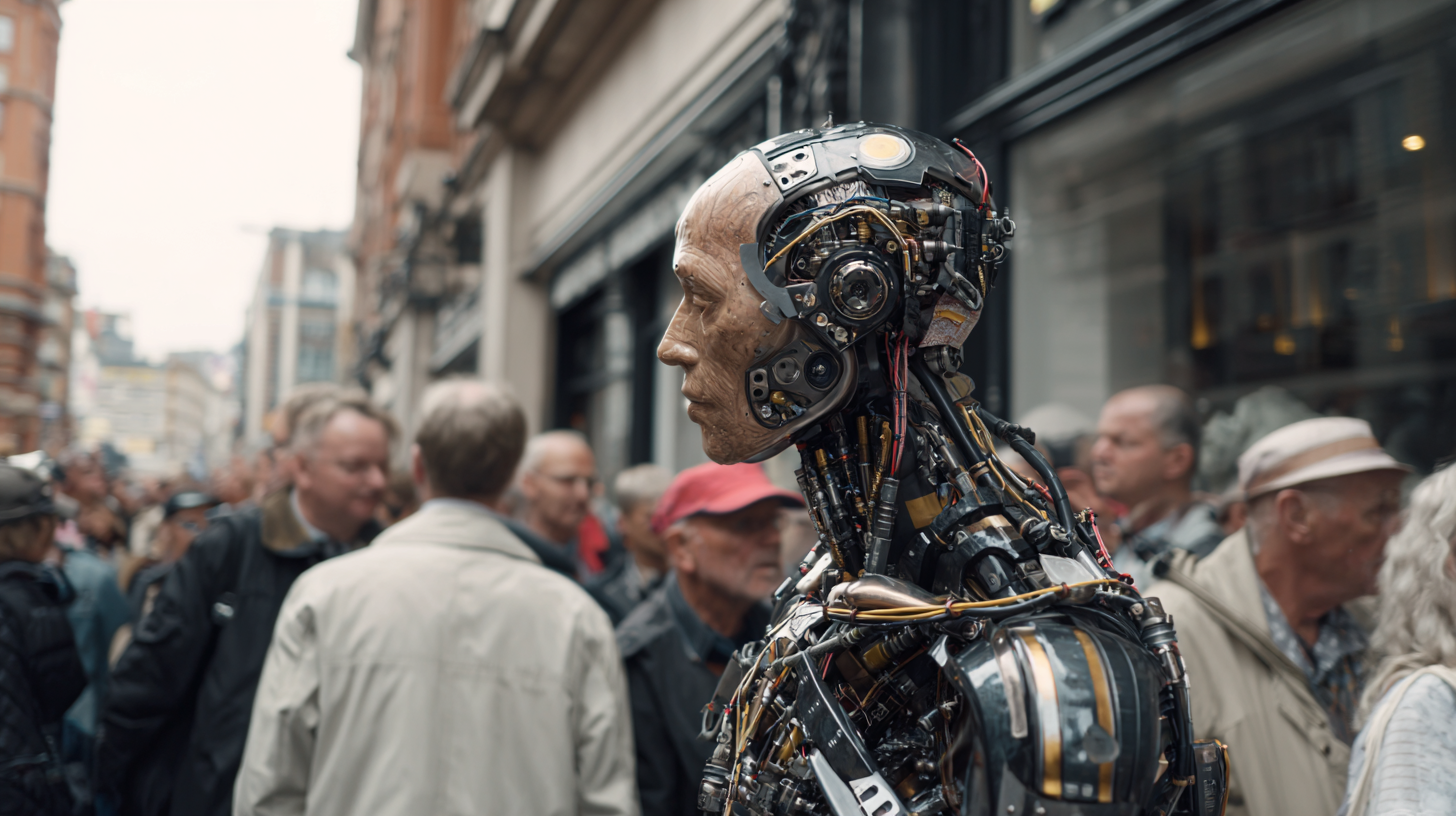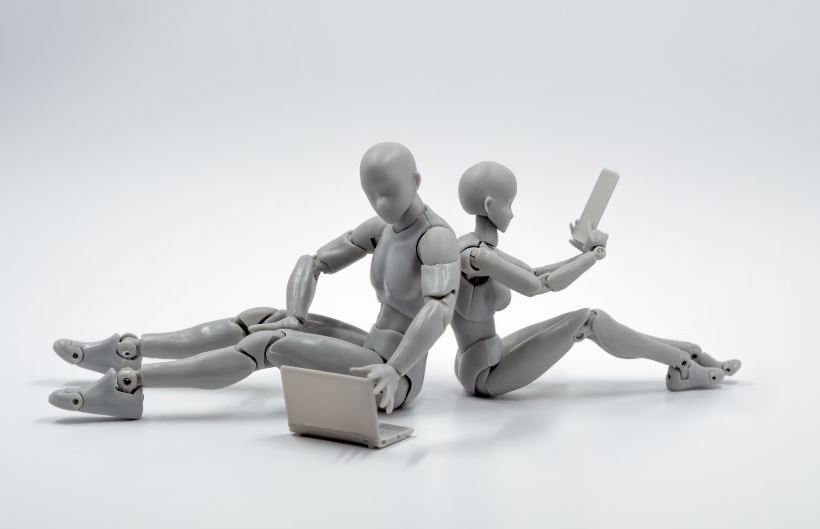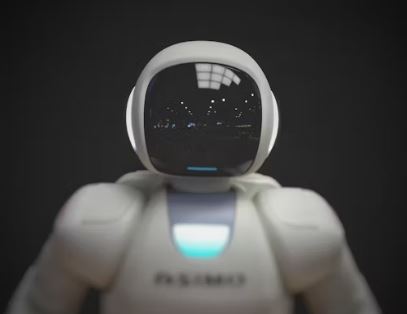
The Latest AI News

Unveiling the Future: Exploring the Frontier of Artificial Intelligence
Artificial intelligence (AI) stands at the forefront of technological innovation, poised to redefine the way we live, work, and interact with the world around us. From predictive analytics to autonomous systems, the capabilities of AI continue to expand, reshaping industries and pushing the boundaries of what’s possible. At AI-News.co.uk, we’re dedicated to keeping you informed about the latest advancements, trends, and breakthroughs in this dynamic field.
A Journey into the AI Landscape:
As we embark on this journey into the AI landscape, it’s essential to understand the breadth and depth of its impact. AI is not just a single technology; rather, it’s a convergence of various disciplines, including machine learning, natural language processing, robotics, and computer vision. These diverse components work in tandem to enable machines to perceive, reason, and act in ways that mimic human intelligence.
The Evolution of AI:
The evolution of AI has been marked by significant milestones, from the birth of symbolic AI in the 1950s to the emergence of neural networks and deep learning in recent years. Today, AI systems are capable of feats once thought impossible, from defeating world champions in complex board games to diagnosing medical conditions with accuracy rivaling that of seasoned professionals.
Applications Across Industries:
The impact of AI is felt across a wide range of industries, from healthcare to finance to transportation and beyond. In healthcare, AI is revolutionizing diagnosis and treatment, enabling personalized medicine and improving patient outcomes. In finance, AI-powered algorithms analyze vast amounts of data to detect fraud, optimize investments, and enhance customer experiences. In transportation, autonomous vehicles are poised to transform mobility, making transportation safer, more efficient, and more accessible than ever before.
Ethical Considerations:
As AI continues to proliferate, it’s crucial to address ethical considerations surrounding its development and deployment. Questions about privacy, bias, and accountability loom large, requiring thoughtful consideration and proactive measures to ensure that AI technologies are used responsibly and ethically.
Looking to the Future:
As we peer into the future, the potential of AI seems boundless. From enhancing human capabilities to tackling some of society’s most pressing challenges, AI holds the promise of a brighter tomorrow. However, realizing this potential requires collaboration, innovation, and a commitment to ethical stewardship. At AI-News.co.uk, we’re committed to providing insightful analysis, thought-provoking articles, and comprehensive coverage of the rapidly evolving AI landscape. Whether you’re a technology enthusiast, industry professional, or curious reader, AI-News.co.uk is your trusted source for all things AI. Join us in shaping the future of technology and innovation.

Exploring the Future of Humanoids: Will They Replace Us?
In the realm of science fiction, the idea of humanoid robots replacing humans has long captured our imaginations. From the fearsome Terminators of “The Terminator” franchise to the empathetic androids of “Blade Runner,” popular culture has often depicted a future where artificial beings stand toe-to-toe with their human creators. But as technology advances and the capabilities of robotics and artificial intelligence (AI) continue to evolve, the question arises: will humanoids ever replace us?
The Rise of Humanoid Robots:
Humanoid robots, with their human-like appearance and abilities, have been a fascination for researchers and engineers for decades. From the early days of robotics to the present, significant strides have been made in creating robots that can walk, talk, and interact with humans in increasingly lifelike ways. Today, humanoid robots like Boston Dynamics’ Atlas and Honda’s ASIMO demonstrate impressive agility, dexterity, and social interaction skills, bringing us closer to the vision of humanoid companions and assistants.
Capabilities and Limitations:
While humanoid robots have made remarkable progress, they still face significant limitations compared to humans. Despite advances in AI and robotics, humanoids struggle with tasks that humans perform effortlessly, such as understanding and navigating complex environments, interpreting nuanced social cues, and exercising judgment and creativity. While robots excel in repetitive, predictable tasks, they often falter in unpredictable or unfamiliar situations, highlighting the fundamental differences between artificial and human intelligence.
The Role of Humanoid Robots:
Rather than replacing humans, humanoid robots are more likely to complement and augment human capabilities in various domains. In healthcare, humanoid robots can assist caregivers with tasks such as lifting patients, providing companionship to the elderly, and facilitating therapy for individuals with disabilities. In industry, humanoid robots can collaborate with humans in manufacturing and logistics, handling repetitive tasks and enhancing efficiency. Additionally, humanoid robots may play roles in entertainment, education, and research, providing engaging experiences and insights into human-robot interaction.
Ethical and Societal Implications:
As humanoid robots become more integrated into society, ethical considerations abound. Questions about privacy, autonomy, job displacement, and the impact on human relationships must be carefully addressed. While humanoids offer potential benefits, including increased productivity and improved quality of life, they also raise concerns about unemployment, inequality, and the erosion of human dignity. It’s imperative to navigate these ethical challenges thoughtfully and responsibly to ensure that humanoid robots serve humanity’s best interests.
While humanoid robots continue to advance in capabilities and sophistication, the idea of them replacing humans remains speculative and distant. Rather than adversaries or competitors, humanoids are poised to become partners and collaborators, enhancing our capabilities and enriching our lives in ways yet to be fully realized. By embracing innovation, fostering collaboration, and addressing ethical considerations, we can harness the potential of humanoid robots to create a future where humans and machines coexist harmoniously, each contributing their unique strengths to society.
FAQ: The Future of Artificial Intelligence and Humanoid Robots
1. What is artificial intelligence (AI)?
Artificial intelligence refers to computer systems that simulate human intelligence processes, such as learning, reasoning, problem-solving, and language understanding, often using technologies like machine learning and neural networks.
2. How is AI being used today?
AI is used across a wide range of industries including healthcare (for diagnostics), finance (for fraud detection and algorithmic trading), retail (for personalized recommendations), and transportation (in autonomous vehicles).
3. What is a humanoid robot?
A humanoid robot is a machine designed to resemble and mimic human physical appearance and behavior. These robots are built to interact with humans in natural ways, often featuring limbs, faces, and sensors to facilitate communication.
4. Will humanoid robots replace humans?
Currently, humanoid robots are not expected to replace humans but to assist and augment human roles in industries like healthcare, logistics, education, and customer service. Their goal is to work alongside people rather than take their place entirely.
5. How advanced are humanoid robots today?
Humanoid robots have become more agile and lifelike, with examples like Boston Dynamics’ Atlas and Honda’s ASIMO showcasing abilities like walking, running, lifting objects, and basic social interactions. However, they still lack full human-level intelligence and adaptability.
6. What are the limitations of current humanoid robots?
Despite rapid progress, humanoids struggle with unpredictable environments, interpreting emotional or social cues, and creative or judgment-based tasks. Their intelligence is narrow and task-specific.
7. Can AI surpass human intelligence?
AI has already surpassed humans in narrow domains like chess or data pattern recognition, but it has not reached general intelligence—the ability to understand and learn any intellectual task a human can perform.
8. What are the ethical concerns around AI and humanoid robots?
Major concerns include data privacy, algorithmic bias, job displacement, surveillance misuse, autonomy of AI systems, and impacts on human relationships and identity. These need active regulation and ethical oversight.
9. How is AI transforming healthcare?
AI is improving diagnostics (e.g., detecting cancers or retinal diseases), personalizing treatment plans, accelerating drug discovery, and assisting in robotic surgeries, leading to more accurate and efficient medical care.
10. What is the impact of humanoids in healthcare?
Humanoid robots assist caregivers by lifting or transporting patients, providing companionship to the elderly, helping children with autism, and guiding physical therapy, making care more scalable and interactive.
11. How are humanoids used in education?
In classrooms, humanoid robots act as teaching aids, helping with language learning, social skills, or STEM activities. Their interactive design makes learning more engaging and personalized.
12. What are AI’s industrial applications?
AI powers predictive maintenance, quality control, and inventory management. In tandem, humanoids are beginning to support tasks in warehouses, assembly lines, and customer-facing roles in retail.
13. Will humanoids affect employment?
Some routine and manual jobs may be replaced or reshaped, but humanoids are more likely to complement workers, especially in physically demanding or dangerous environments. New jobs will also emerge in AI design, ethics, and oversight.
14. What’s the role of AI in society’s future?
AI holds promise to solve large-scale problems like climate modeling, global health issues, and accessibility challenges. Its continued integration into everyday life will depend on trust, transparency, and responsible innovation.
15. How can we ensure responsible use of AI and robotics?
Creating ethical frameworks, enforcing regulation, encouraging diversity in AI development, and promoting public understanding are all critical to ensuring these technologies benefit everyone and do not deepen societal divides.